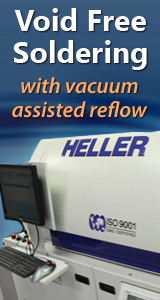Burner Controller
Burner Controller is a device that is responsible for the safe startup, operation, and shutdown of more than one burner or boiler. Its main function is to monitor and control the main burners, utilize flame scanner to detect and discriminate between the main flames and igniters. It is very much important for the safety of the burner or boilers connected with it.
Burner controller helps in improving the plant uptime and reduces cost. Besides, it ensures the regulatory compliance. This may guarantee the smooth and hassle-free working of the burner.
Before purchasing burner controller, always consider the key points first. Key points to be considered are the capacity of the burner or the burner controller, temperature needs etc.
Before purchasing burner controller, always consider the key points first. Key points to be considered are the capacity of the burner or the burner controller, temperature needs, turns downs etc.
This device also features low power consumption, uninterrupted performance, long serving life and many other features. The overall operation of the device is simple and anyone can operate it without digging into the pool of technical knowledge.
Burner Controller are available through Quick Time Engineering Inc.
Flame Sensor
Flame sensor is one kind of detector which mainly designed for detecting as well as responding to the occurrence of a fire or flame. This sensor is used in industrial boilers. The main function of this sensor is to give authentication whether the boiler is properly working or not. Due to different mechanism to detect flame compare with a heat/smoke detector, flame sensor response faster and more accurate to flame existence.
Flame sensor can be built with an electronic circuit using a receiver like electromagnetic radiation. This sensor uses the infrared flame flash method, which allows the sensor to work through a coating of oil, dust, water vapor, otherwise ice.
Contains four pins
- Pin 1(VCC pin) = Voltage supply rages from 3.3 V to 5 V
- Pin 2 (GND) = Ground pin
- Pin 3 (AOUT) = Analog Output pin
- Pin 4 (DOUT) = Digital Output pin
There is four type of flame sensor
- IR single frequency
- IR multi-spectrum
- UV flame detectors
- UV/IR flame detectors
Features and Specification of flame sensor
- Photosensitivity is high
- Response time is fast
- SImple to use
- Sensitivity is adjustable
- Detection angle is 600
- IT is responsive to the flame range.
- Accuracy can be adjustable
- Operating voltage is 3.3 V to 5 V
- Analog voltage o/ps and digital switch o/ps
- The PCB size is 3 cm x 1.6 cm
- Power indicator & digital switch o/p indicator
- If the flame intensity is lighter within 0.8m then the flame test can be activated. If the flame intensity is high, then the detection of distance will be improved.
Flame Sensor are available through Quick Time Engineering Inc.
Flame Detector
Flame detector is the solution for any application where fire may result in a large loss of capital equipment, where risk to personnel is high. The releases to flammable liquids and gases can ignite, sometimes violently when mixed with air, leading to injury and property damage. Having flame detectors will enhance safety of processes involving flammable material by triggering an alarm when fire erupt, thus providing early warning and helping ensure people’s safety.
There is four type of flame detectors. First type of flame detectors is infrared (IR) flame detectors. This type of flame detector work within infrared spectral band. Specific spectral pattern in the infrared region emitted from hot gases can be sensed with a thermal imaging camera (TIC). False alarms may be triggered by other hot surfaces. Typical frequency where single frequency IR flame detector is sensitive is in the 4.4 micro meter range. Typical response time for this type of flame detector is 3 to 5 seconds.
The second type of flame detectors is Ultraviolet (UV) detectors. UV detectors work with wavelength shorter than 300 nm. It able to detects fire and explosions within 3 to 4 milliseconds due to the UV radiation emitted at the instant of their ignition. False alarms could be triggered by UV sources such as lightning, arc welding, radiation, sunlight etc. Thus, in order to reduce chance of false alarm, 2 to 3 seconds delay is often included.
The third type of flame detectors is Ultraviolet and Infrared flame detectors. This type of flame detectors is the combination of both UV and IR flame detectors. UV and IR detectors can minimize false alarms.
The last type of flame detectors is Multispectrum Infrared flame detectors (MSIR). It able to measure radiant energy in multiple discrete spectral regions to provide enhanced discrimination against non-fire radiant energy/false alarm sources. It is suited for application where dirty, smoky fires may occur. Deliver exceptional detection range to most hydrocarbon fuels, up to 200 feet away depending on fire type and size, and moderate speed of response. It can provide outdoor and indoor coverage. MSIR flame detectors can provide the best overall sensitivity to a fire along with the highest level of immunity to infrared radiation.
Industrial Process and plant Flame Detection Requirements
- False Alarm Immunity
- One of the most important consideration for the selection of flame detectors.
- It is a productivity and cost issue
- Flame detectors need to discriminate between actual flames and radiation from sunlight, lightning, arc welding, hot objects, and other non-flame sources
- Detection Range and Response Time
- Greater the distance and the shorter the time that a given flames sensing rechnology requires to detect a flame, the more effective it will be in providing early notification of a fire alarm and initiating mitigation actions.
- Field of View (FOV)
- Detection range and FOV define area coverage per device. Flame detectors with alrger FOV may help reduce the number of flame detector required to cover a certain area
- Environmental Factors
- Operate over a wide temperature range
- Communication capabilities
- Effective communication of outputs like 4 to 20mA analog signals or relay contacts for remote alarm or fault indication.
Flame Detectors are available through Quick Time Engineering Inc.
Flame Amplifiers
Flame amplifiers range from 0.8 to 1 second, or 2.0 to 3.0 seconds depending on the amplifier and relay module used. Flame amplifiers comes in four variation, UV flame amplifier, rectification flame amplifier, visible light flame amplifier and self-check UV flame amplifier. All of the flame amplifier responds to their corresponding signal received from a flame detector to indicate the presence of flame when used with corresponding relay modules.
Flame Amplifiers are available through Quick Time Engineering
Oil Burner Primary Control
The primary control has three main functions, to respond to the thermostat, to respond to the limit control and to control the startup, run, cycle, and shutdown of the oil burner. Primary control accomplishes its mission by reacting to the presence or absence of flame. It manages oil burner startup by checking for a flame before energizing ignition transformers (or igniters), burner motors, and oil valves. Lastly, primary control is used to supervised burner shutdown once the thermostat is satisfied or the limit control opens.
For the primary control to activate the oil burner, both the line and low voltage circuits must be closed. That means that if either the thermostat or the limit control is satisfied (open) the primary control will not activate the oil burner.
Oil Burner Primary Control are available through Quick Time Engineering
Solid State Spark Generator
This device is used to ignite power gas burners in commercial and industrial applications. A single high voltage electrode is included for gas applications.
Solid State Spark Generator are available through Quick Time Engineering Inc.
Quick Time Engineering Inc is an international company with offices and distribution networks in the USA, Hong Kong, Europe and Malaysia.
In its 20 years of operation since 1998, Quick Time Engineering Inc had emerged from a local engineering company with a single staff that provided solutions in factory automation to become nowadays a company that serves the Oil & Gas industries, EPC contractors, System Integrators and other industrial automation and process control companies worldwide. Customers from over 50 countries worldwide trust us with their need for process control instruments and industrial automation products.
For more information about Quick Time Engineering Inc , visit www.quicktimeonline.com or email enquiry@quicktimeonline.com






